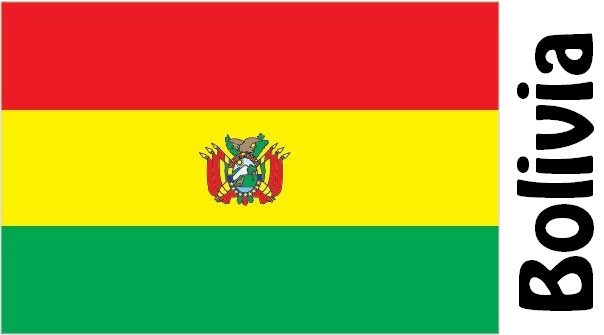Bolivia Facts
Bolivia, state of South America, between the South tropic and 10 ° south latitude; 1.1 million km², 11.4 million residents (2019). The country has been named after Simón Bolívar.

Country facts
- Estado Plurinacional de Bolivia / Multinational State of Bolivia
- Country abbreviation: BO
- Area: 1.1 million km²
- Population (2019): 11.4 million residents
- Capital: Sucre (formal), La Paz (real)
- Main languages: Spanish, Aymara, Quechua
- State: Republic
- Head of State and Head of Government: Jeanine Añez (Interim President)
- Per capita GDP (2018): US $ 3,549
- GNI per capita (2018): US $ 3,370
- Currency unit: 1 boliviano = 100 centavos
- Currency code: PDO
- Country number (telephony): 591
- Internet domain name: stay
- Time difference compared to Sweden: −5
- National Day: August 6 (Independence Day, 1825)
Nature
- Land use: forest (53%), agricultural land (2%), other (45%)
- Highest mountain: Sajama (6 542 m above sea level)
- Largest lake: Lake Titicaca (8 100 km² )
Population
- Population density (2019): 10 residents per km²
- Natural population growth (2019): 1.6%; birthrate 22 ‰, deathrate 6 ‰
- Age structure (2019): 0-14 years (32%), 15-64 (61%), 65- (7%)
- Life expectancy (2019): men 69 years, women 76 years
- Infant mortality (2019): 30 per 1,000 live births
- Population Forecast 2050 ; 16 million residents
- HDI (2017): 0.603 (place 118 of 189)
- Urbanization rate (2019): 69%
- Most populous cities (2013): Santa Cruz (1.4 million residents), La Paz (757,200), Cochabamba (632,000)
Business
- Industry’s contribution to GDP (2017): agriculture (14%), industry (38%), service (48%)
- exports (2017): US $ 7,746 million
- Main export products: natural gas, soybeans, oil
- Main exporting countries: USA, Brazil, Argentina
- Imports (2017): US $ 8,601 million
- Main import products: oil products, plastic products, paper, transport equipment
- Main importing countries: Chile, Brazil, Argentina
- Railway network (2019): 3 960 km
Bolivia consists of two-thirds of low plains, which occupy the area east of the Andes. To the west, the Andes dominate, which in Bolivia reaches over 6,000 meters above sea level. In the Andes is also the Bolivian high plateau with Lake Titicaca, one of the world’s largest lakes (3,810 m above sea level). Bolivia is completely within the tropical zone, but the climate holds great contrasts, mainly due to the elevation differences.
The country’s current constitution was adopted in 2009. The president, who has great powers, is both head of state and government. The term of office is five years, and the president may be re-elected once. Bolivia became independent in 1825.
Despite great natural resources, Bolivia is one of the poorest countries in Latin America. Half of the population derives from agriculture. Cocoa cultivation and illegal cocaine handling were of great importance in the past, but since the mid-1990s, international criticism, mainly from the United States, has intensified, and efforts have been made to reduce its importance. The country has rich gas resources and exports large quantities to neighboring countries, mainly Brazil.
Bolivia Map














































